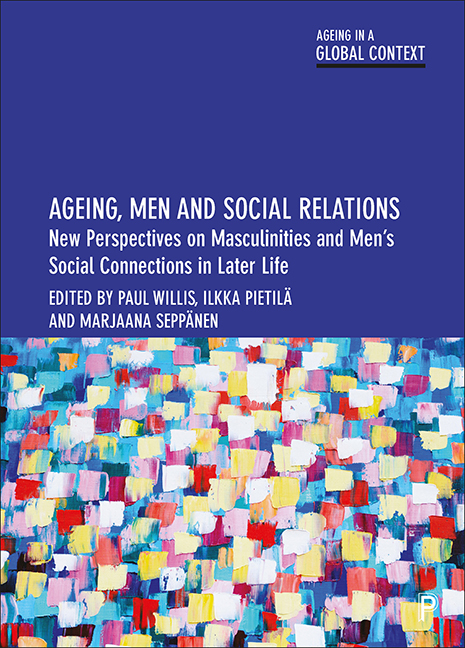 Ageing, Men and Social Relations
Ageing, Men and Social Relations Published online by Cambridge University Press: 18 January 2024
Introduction
This chapter concerns social inclusion in community-dwelling men with dementia. Drawing on my own research and situating this within the wider academic literature, I demonstrate that masculinities interplay with other sociodemographic determinants to shape the experiences of men living with dementia. Therefore, if policy makers and practitioners are to achieve their aim of supporting social inclusion for all people with dementia, they must be guided by research that considers these gendered experiences. I finish the chapter by considering the important role that digital technology, and specifically gaming technology, is likely to have in promoting social inclusion in men with dementia through appealing to their masculinities.
Key theoretical concepts and my own research
This section outlines some of the key concepts that I draw upon within the chapter to provide a better understanding of the theoretical basis for the work discussed. I also summarise some of the research projects that I have worked on, which have helped to inform my thinking.
Within my discussions, I acknowledge the concept of intersectionality. This refers to the multiple social locations that an individual can occupy based on sociodemographic determinants including age, gender, ethnicity and class. The concept helps us to understand people as holistic beings who encounter both oppression and privilege as a consequence of their social location (Calasanti, 1996). Although gender and masculinity are important social determinants to examine in their own right, it is necessary to be mindful that they ‘intersect’ with other social structures and dynamics in life to influence people’s experiences of inclusion (Connell and Pearse, 2015). When discussing masculinities, I draw on the seminal work of Connell (2005) and the concept of hegemonic masculinities. This refers to the most accepted way of being a man within a particular historical era, social institution or community. While hegemonic masculinities are rarely achieved by the majority of men, they represent a benchmark by which men can position themselves and judge their achievements (Connell and Messerschmidt, 2005). Their hierarchical nature can be used to legitimise certain masculine practices as well as subordinate other masculinities and women.
To save this book to your Kindle, first ensure [email protected] is added to your Approved Personal Document E-mail List under your Personal Document Settings on the Manage Your Content and Devices page of your Amazon account. Then enter the ‘name’ part of your Kindle email address below. Find out more about saving to your Kindle.
Note you can select to save to either the @free.kindle.com or @kindle.com variations. ‘@free.kindle.com’ emails are free but can only be saved to your device when it is connected to wi-fi. ‘@kindle.com’ emails can be delivered even when you are not connected to wi-fi, but note that service fees apply.
Find out more about the Kindle Personal Document Service.
To save content items to your account, please confirm that you agree to abide by our usage policies. If this is the first time you use this feature, you will be asked to authorise Cambridge Core to connect with your account. Find out more about saving content to Dropbox.
To save content items to your account, please confirm that you agree to abide by our usage policies. If this is the first time you use this feature, you will be asked to authorise Cambridge Core to connect with your account. Find out more about saving content to Google Drive.